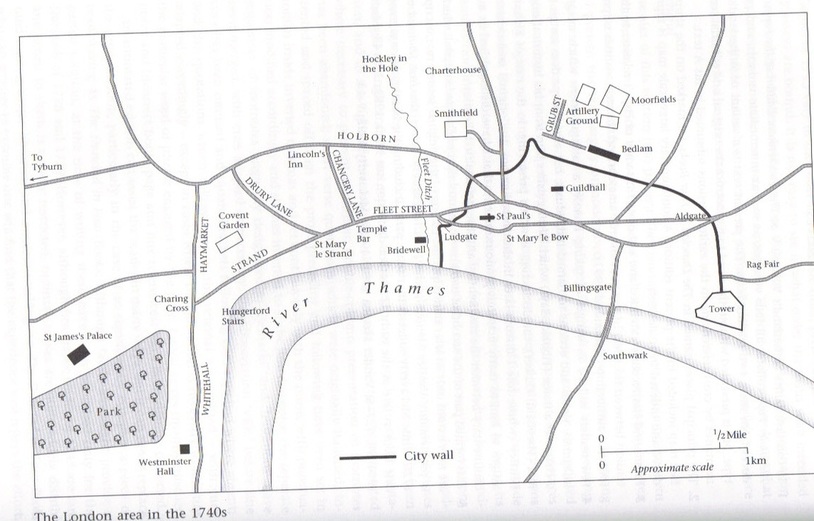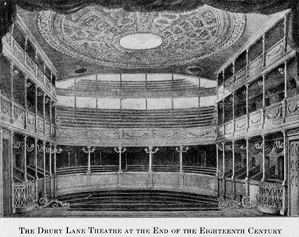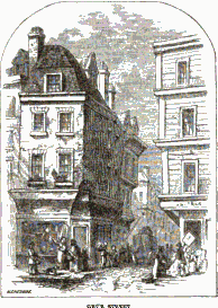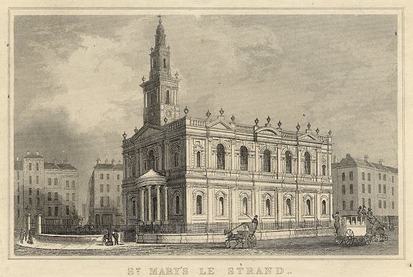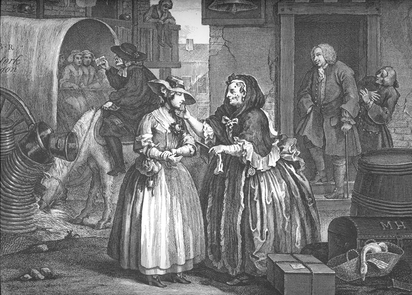Topography of the Dunciad
Bedlam
See BOOK 1.2
Covent Garden
London playhouse built in 1732
Drury Lane
Site of Drury Lane Theater, most famous of London play houses. Was built in 1662. After burning to the ground was rebuilt in 1674 on Covent Street where it remained until 1791. See BOOK 1.11
Fleet Ditch
Waterway running from Hampstead Heath down to the Thames. The ditch was used as a waste dump for local factories as well as for the local community. The excessive pollution of the ditch made it one of the most devastating areas during the plague. See BOOK 2.10
"The Fleet," Debtors Prison
Besides its common use as a debtors prison the Fleet was also known to host clandestine and irregular marriages by the prison clergymen. Found in BOOK 2.11
Grub Street
Originally built on a marsh extending from Fleet Ditch to Bishopgate with Moorfields to the east (itself being used as a refuse dump.) Named for a "grube" or drain/ ditch. Grub also a maggot or dwarf (ie, the puny stature of a mediocre writer.) See BOOK 1.2
Hockley in the Hole
Down and out place north of Fleet Ditch where spectacles such as bear-baiting could be found. See BOOK 1.7, 1.11
Jewen Street
Milton composed much of Paradise Lost while living on Jewen Street. Although it is next to Grub Street it is generally considered well built and well inhabited. John Dunton also lived and worked here for a period.
St. Mary Le Strand
One of the churches built under Queen Anne's building project. Church built on site formerly occupied by a maypole. Pope felt the location of the church in an area so laden with crime and prostitution to be unfit for a holy building. See BOOK 2.2
Ludgate Prison
Name of prison alludes to the mythical King Lud, founder of London. Pope's disdain for decayed Gothic architecture made Ludgate a fitting addition to his poem. See BOOK 2.11.
Moorfields
Originally a swamp and site for the city's refuse. Eventually would be drained and become London's first recreation grounds. Even after being cleaned up the area still attracted an uncouth crowd at night of prostitutes of either sex. The grounds were also used to bury suicides.
Needham's
Notorious brothel run by Eliza Needham depicted in the first plate of Hogarth's A Harlot's Progress. Appears in BOOK 1.11
Rag Fair
Squalid area that sold used clothing, much of it stolen. Was the original site of the Dunciad before Pope moved it to Smithfield.
Smithfield
Site of Bartholomew Fair. Smithfield itself was known to have some of the most infamous thieves including Jonathan Wild. See BOOK 1.1
Tyburn
Site for hangings. See BOOK 1.2
